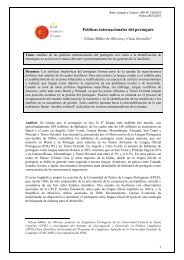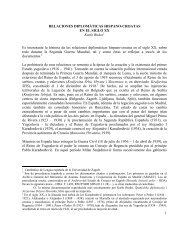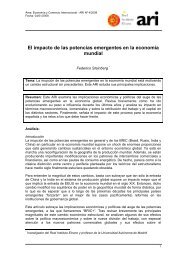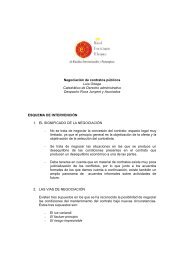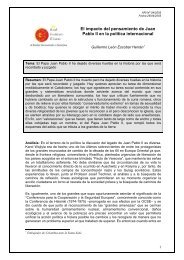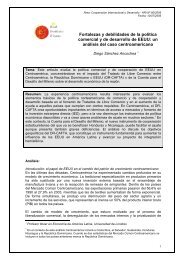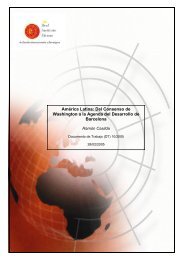Spain and the United States - Real Instituto Elcano
Spain and the United States - Real Instituto Elcano
Spain and the United States - Real Instituto Elcano
Create successful ePaper yourself
Turn your PDF publications into a flip-book with our unique Google optimized e-Paper software.
CHAPTER 4<br />
FOREIGN TRADE<br />
The US market, in <strong>the</strong> words of a former Spanish trade commissioner, is “like<br />
Troy was for <strong>the</strong> Greeks – very difficult to conquer from without, very<br />
expensive to conquer from within.” 1 The easiest thing to do is to ignore <strong>the</strong><br />
market <strong>and</strong> concentrate on o<strong>the</strong>rs, such as Europe <strong>and</strong> Latin America, which is<br />
what <strong>the</strong> vast majority of Spanish companies do. But it is too important to<br />
overlook, <strong>and</strong> success in it often means that a company is ready to be a global<br />
player. <strong>Spain</strong>’s efforts to sell to <strong>the</strong> world’s largest market (excluding intra-<br />
European Union trade) have so far not amounted to very much. The <strong>United</strong><br />
<strong>States</strong> takes around 4% of <strong>the</strong> country’s total exports, roughly <strong>the</strong> same as <strong>the</strong><br />
proportion that goes to all of Latin America <strong>and</strong> less than half that to<br />
neighbouring Portugal (see Exhibit 4.1). It is normal for a country to trade<br />
more with its immediate neighbours (in <strong>the</strong> <strong>United</strong> <strong>States</strong>’ case Mexico <strong>and</strong><br />
Canada), but what reveals a weakness in <strong>Spain</strong>’s case is that <strong>the</strong> <strong>United</strong><br />
Kingdom, Germany, Italy <strong>and</strong> France trade much more with <strong>the</strong> <strong>United</strong> <strong>States</strong><br />
as a proportion of <strong>the</strong>ir total trade. For example, <strong>the</strong> <strong>United</strong> <strong>States</strong> takes around<br />
15% of <strong>the</strong> <strong>United</strong> Kingdom’s total exports.<br />
According to US figures, Spanish exports account for a mere 0.5% of<br />
America’s total foreign purchases (0.7% in 1989), one-sixth <strong>the</strong> UK share, onefourth<br />
<strong>the</strong> French share <strong>and</strong> one-fourth <strong>the</strong> Italian share <strong>and</strong> compared with<br />
<strong>Spain</strong>’s 2% share of global trade (see Exhibit 4.2). <strong>Spain</strong>’s share of <strong>the</strong> US<br />
market is more in line with that of medium-sized EU countries, such as Austria,<br />
Belgium or Denmark, whose economies are much smaller. Although <strong>the</strong><br />
volume of exports is small, <strong>the</strong> <strong>United</strong> <strong>States</strong> is <strong>Spain</strong>’s sixth-largest market,<br />
making it a top-tier trading partner, only exceeded by <strong>Spain</strong>’s “natural”<br />
markets of France, Germany, Portugal, <strong>the</strong> <strong>United</strong> Kingdom <strong>and</strong> Italy. The<br />
1. See <strong>the</strong> article by Manuel Valle, a former trade commissioner in New York, in <strong>the</strong> autumn 2001 issue<br />
of Economía Exterior.



